-
 Bitcoin
Bitcoin $106,754.6083
1.33% -
 Ethereum
Ethereum $2,625.8249
3.80% -
 Tether USDt
Tether USDt $1.0001
-0.03% -
 XRP
XRP $2.1891
1.67% -
 BNB
BNB $654.5220
0.66% -
 Solana
Solana $156.9428
7.28% -
 USDC
USDC $0.9998
0.00% -
 Dogecoin
Dogecoin $0.1780
1.14% -
 TRON
TRON $0.2706
-0.16% -
 Cardano
Cardano $0.6470
2.77% -
 Hyperliquid
Hyperliquid $44.6467
10.24% -
 Sui
Sui $3.1128
3.86% -
 Bitcoin Cash
Bitcoin Cash $455.7646
3.00% -
 Chainlink
Chainlink $13.6858
4.08% -
 UNUS SED LEO
UNUS SED LEO $9.2682
0.21% -
 Avalanche
Avalanche $19.7433
3.79% -
 Stellar
Stellar $0.2616
1.64% -
 Toncoin
Toncoin $3.0222
2.19% -
 Shiba Inu
Shiba Inu $0.0...01220
1.49% -
 Hedera
Hedera $0.1580
2.75% -
 Litecoin
Litecoin $87.4964
2.29% -
 Polkadot
Polkadot $3.8958
3.05% -
 Ethena USDe
Ethena USDe $1.0000
-0.04% -
 Monero
Monero $317.2263
0.26% -
 Bitget Token
Bitget Token $4.5985
1.68% -
 Dai
Dai $0.9999
0.00% -
 Pepe
Pepe $0.0...01140
2.44% -
 Uniswap
Uniswap $7.6065
5.29% -
 Pi
Pi $0.6042
-2.00% -
 Aave
Aave $289.6343
6.02%
how to get my eth address on binance
On Binance, your ETH deposit address is dynamically generated for each transaction, prioritizing security; verify it meticulously before sending funds, and ensure the correct network (ERC-20) is selected to avoid irreversible loss.
Mar 24, 2025 at 10:21 pm
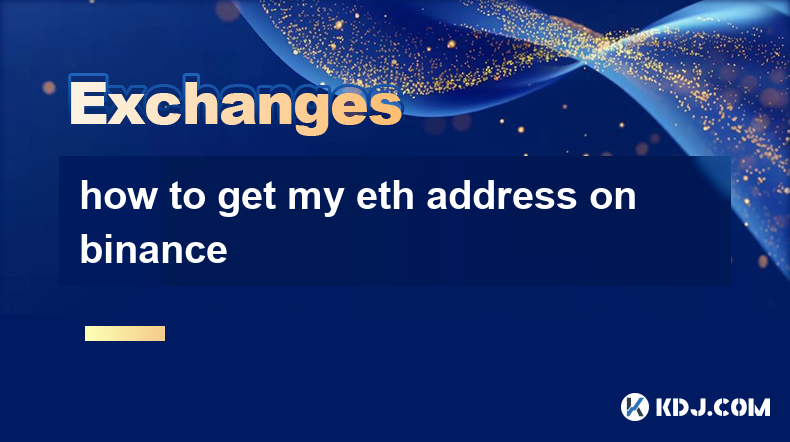
Key Points:
- Finding your ETH address on Binance involves navigating the platform's interface. It's crucial to understand the difference between deposit and withdrawal addresses.
- Binance doesn't display your ETH address prominently; you generate it when initiating a deposit.
- Security is paramount; always verify the address before sending funds.
- Understanding the different networks (like ERC-20) is vital for successful ETH transfers.
- Mistakes in selecting the wrong network can lead to irreversible loss of funds.
How to Get Your ETH Address on Binance
Binance, a leading cryptocurrency exchange, doesn't display your Ethereum (ETH) address readily on your account dashboard. Instead, you generate a unique address each time you intend to deposit ETH. This is a security measure to prevent unauthorized access. The process is straightforward, but requires careful attention to detail.
First, you need to log in to your Binance account. Ensure you're using your secure password and have enabled two-factor authentication (2FA) for enhanced security. Neglecting security measures can leave your account vulnerable.
Next, navigate to the "Wallet" section of your Binance account. This section usually has clear links to "Deposit" or "Withdraw" cryptocurrencies. Click on "Deposit".
You'll then see a list of cryptocurrencies supported by Binance. Find Ethereum (ETH) in this list. Click on it.
Now, you'll see a screen displaying your ETH deposit address. This address is unique to this deposit transaction and will change each time you initiate a new deposit. This unique address is crucial for receiving ETH transfers.
Before you use this address, double-check that it's correct. Sending ETH to an incorrect address leads to irreversible loss of funds. Always visually compare the address displayed on Binance with the address you're sending from.
It's critical to understand that you'll need to choose the correct network. Ethereum operates primarily on the ERC-20 network. Selecting the wrong network (e.g., BEP-20) will prevent the ETH from reaching your Binance wallet. Pay close attention to this step during the deposit process. Incorrect network selection is a common source of lost funds.
After selecting the correct network (ERC-20 for ETH), you can copy the address and paste it into the sending platform (another exchange, wallet, etc.). Double-check the address again before confirming the transaction. There's no recourse if you send ETH to the wrong address.
Your ETH deposit address is only generated when you initiate a deposit transaction. Binance doesn't maintain a single, static ETH address for each user. This approach significantly enhances security.
Remember, always be cautious when handling your cryptocurrency. Use a secure internet connection and only use the official Binance website or app to avoid phishing scams.
Understanding Withdrawal Addresses
While obtaining your deposit address is relatively straightforward, understanding withdrawal addresses is also important. Withdrawal addresses are the addresses where you send your ETH from your Binance account to another wallet or exchange. You will specify this address during the withdrawal process. The withdrawal process will require you to enter the receiving address, the amount of ETH to send, and potentially a network fee. Always confirm the address carefully before initiating a withdrawal. Errors here can result in the loss of your funds. The withdrawal process will require authentication steps, such as 2FA codes.
Security Best Practices for Handling ETH on Binance
Never share your Binance account details, including your deposit or withdrawal addresses, with anyone. Legitimate Binance representatives will never ask for this information. Beware of phishing scams designed to steal your credentials.
Always use strong and unique passwords for your Binance account. Consider using a password manager to generate and securely store strong passwords.
Enable two-factor authentication (2FA) on your Binance account for an extra layer of security. This adds an additional authentication step to prevent unauthorized access.
Regularly review your Binance account activity to ensure no unauthorized transactions have occurred. Immediately report any suspicious activity to Binance support.
Use a hardware wallet for long-term storage of ETH. Hardware wallets offer a higher level of security compared to software wallets or exchanges.
Common Questions:
Q: What if I lose my ETH deposit address?
A: You don't retain the address after the deposit. You generate a new one for each deposit transaction.
Q: Can I use the same ETH address multiple times?
A: Yes, you can use the same ETH address for multiple deposits, but a new address will be generated each time you start a new deposit.
Q: What happens if I send ETH to the wrong address?
A: Sending ETH to the wrong address is irreversible. You will lose access to your funds.
Q: How do I check my ETH balance on Binance?
A: Your ETH balance is visible in your Binance wallet, once it has been successfully deposited.
Q: Why does Binance generate a new address for each deposit?
A: This is a security measure to enhance the protection of your funds. It reduces the risk of unauthorized access.
Q: What are the network fees associated with ETH transactions on Binance?
A: Network fees (gas fees) are determined by the Ethereum network and are paid to miners for processing transactions. The exact amount varies depending on network congestion.
Disclaimer:info@kdj.com
The information provided is not trading advice. kdj.com does not assume any responsibility for any investments made based on the information provided in this article. Cryptocurrencies are highly volatile and it is highly recommended that you invest with caution after thorough research!
If you believe that the content used on this website infringes your copyright, please contact us immediately (info@kdj.com) and we will delete it promptly.
- Bitcoin, Economy, and Capital Foundation: A PNG Perspective
- 2025-06-19 08:45:12
- Sleep Token's Download Headline: Korn Members Weigh In on the Hype
- 2025-06-19 08:25:13
- Nura Wallet's AI Revolution: Now Live on Google Play!
- 2025-06-19 08:25:13
- Trump, Crypto, and Self-Enrichment: A New York Minute on the President's Digital Dealings
- 2025-06-19 08:45:12
- Altcoins: To Buy or to Hold? Navigating the Crypto Landscape
- 2025-06-19 08:50:12
- Prenetics, Bitcoin, and Treasury Strategies: A New Era?
- 2025-06-19 09:05:15
Related knowledge
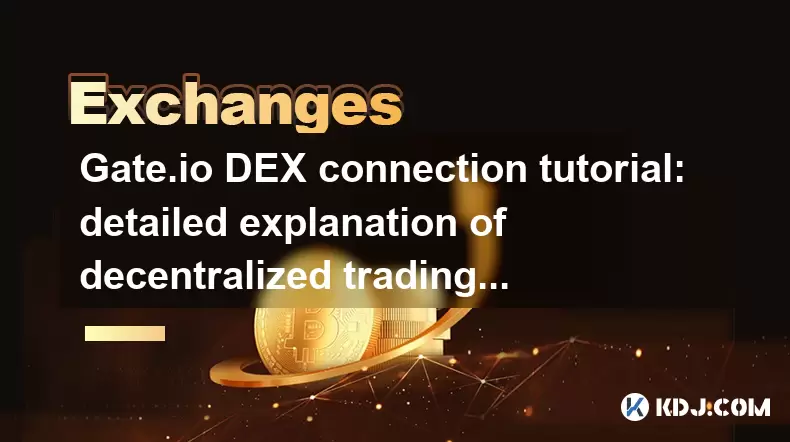
Gate.io DEX connection tutorial: detailed explanation of decentralized trading operation steps
Jun 12,2025 at 08:04pm
Connecting to Gate.io DEX: Understanding the BasicsBefore diving into the operational steps, it is crucial to understand what Gate.io DEX is and how it differs from centralized exchanges. Unlike traditional platforms where a central authority manages user funds and trades, Gate.io DEX operates on blockchain technology, allowing users to trade directly f...
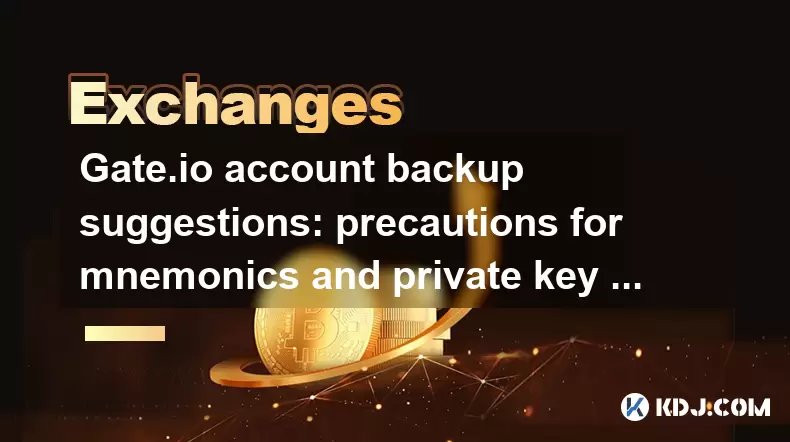
Gate.io account backup suggestions: precautions for mnemonics and private key storage
Jun 12,2025 at 10:56am
Understanding the Importance of Mnemonics and Private KeysIn the world of cryptocurrency, mnemonics and private keys are the core elements that grant users ownership over their digital assets. When using Gate.io or any other crypto exchange, understanding how to securely manage these components is crucial. A mnemonic phrase typically consists of 12 or 2...
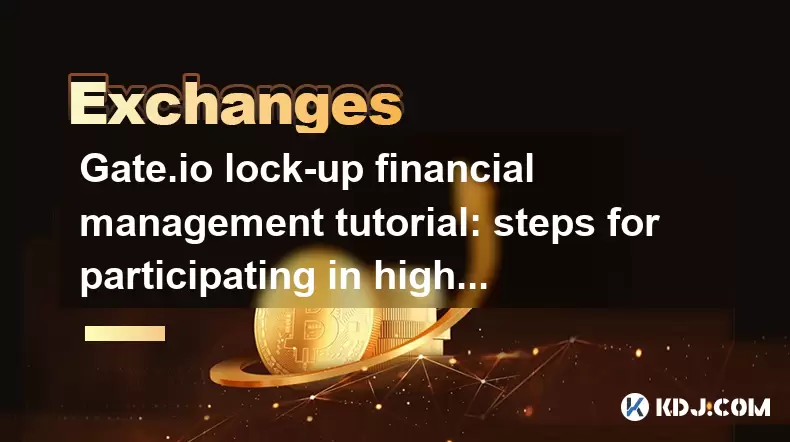
Gate.io lock-up financial management tutorial: steps for participating in high-yield projects and redemption
Jun 13,2025 at 12:43am
What Is Gate.io Lock-Up Financial Management?Gate.io is one of the world’s leading cryptocurrency exchanges, offering users a variety of financial products. Lock-up financial management refers to a type of investment product where users deposit their digital assets for a fixed period in exchange for interest or yield. These products are designed to prov...
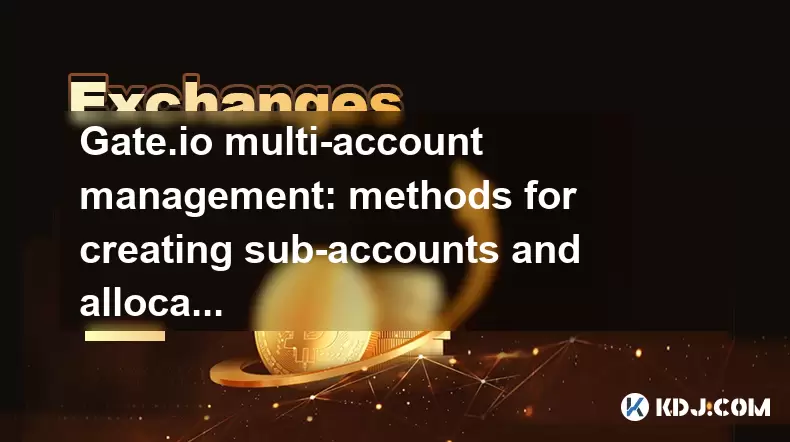
Gate.io multi-account management: methods for creating sub-accounts and allocating permissions
Jun 15,2025 at 03:42am
Creating Sub-Accounts on Gate.ioGate.io provides users with a robust multi-account management system that allows for the creation of sub-accounts under a main account. This feature is particularly useful for traders managing multiple portfolios or teams handling shared funds. To create a sub-account, log in to your Gate.io account and navigate to the 'S...
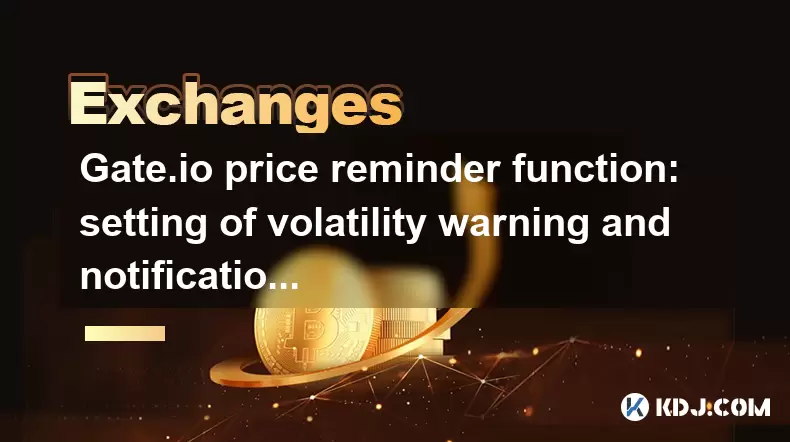
Gate.io price reminder function: setting of volatility warning and notification method
Jun 14,2025 at 06:35pm
What is the Gate.io Price Reminder Function?The Gate.io price reminder function allows users to set up custom price alerts for specific cryptocurrencies. This feature enables traders and investors to stay informed about significant price changes without constantly monitoring market data. Whether you're tracking a potential buy or sell opportunity, the p...

Gate.io trading pair management: tutorials on adding and deleting watchlists
Jun 16,2025 at 05:42am
What Is a Watchlist on Gate.io?A watchlist on Gate.io is a customizable feature that allows traders to monitor specific trading pairs without actively engaging in trades. This tool is particularly useful for users who want to track the performance of certain cryptocurrencies or trading pairs, such as BTC/USDT or ETH/BTC. By organizing frequently watched...

Gate.io DEX connection tutorial: detailed explanation of decentralized trading operation steps
Jun 12,2025 at 08:04pm
Connecting to Gate.io DEX: Understanding the BasicsBefore diving into the operational steps, it is crucial to understand what Gate.io DEX is and how it differs from centralized exchanges. Unlike traditional platforms where a central authority manages user funds and trades, Gate.io DEX operates on blockchain technology, allowing users to trade directly f...

Gate.io account backup suggestions: precautions for mnemonics and private key storage
Jun 12,2025 at 10:56am
Understanding the Importance of Mnemonics and Private KeysIn the world of cryptocurrency, mnemonics and private keys are the core elements that grant users ownership over their digital assets. When using Gate.io or any other crypto exchange, understanding how to securely manage these components is crucial. A mnemonic phrase typically consists of 12 or 2...

Gate.io lock-up financial management tutorial: steps for participating in high-yield projects and redemption
Jun 13,2025 at 12:43am
What Is Gate.io Lock-Up Financial Management?Gate.io is one of the world’s leading cryptocurrency exchanges, offering users a variety of financial products. Lock-up financial management refers to a type of investment product where users deposit their digital assets for a fixed period in exchange for interest or yield. These products are designed to prov...

Gate.io multi-account management: methods for creating sub-accounts and allocating permissions
Jun 15,2025 at 03:42am
Creating Sub-Accounts on Gate.ioGate.io provides users with a robust multi-account management system that allows for the creation of sub-accounts under a main account. This feature is particularly useful for traders managing multiple portfolios or teams handling shared funds. To create a sub-account, log in to your Gate.io account and navigate to the 'S...

Gate.io price reminder function: setting of volatility warning and notification method
Jun 14,2025 at 06:35pm
What is the Gate.io Price Reminder Function?The Gate.io price reminder function allows users to set up custom price alerts for specific cryptocurrencies. This feature enables traders and investors to stay informed about significant price changes without constantly monitoring market data. Whether you're tracking a potential buy or sell opportunity, the p...

Gate.io trading pair management: tutorials on adding and deleting watchlists
Jun 16,2025 at 05:42am
What Is a Watchlist on Gate.io?A watchlist on Gate.io is a customizable feature that allows traders to monitor specific trading pairs without actively engaging in trades. This tool is particularly useful for users who want to track the performance of certain cryptocurrencies or trading pairs, such as BTC/USDT or ETH/BTC. By organizing frequently watched...
See all articles

























































































